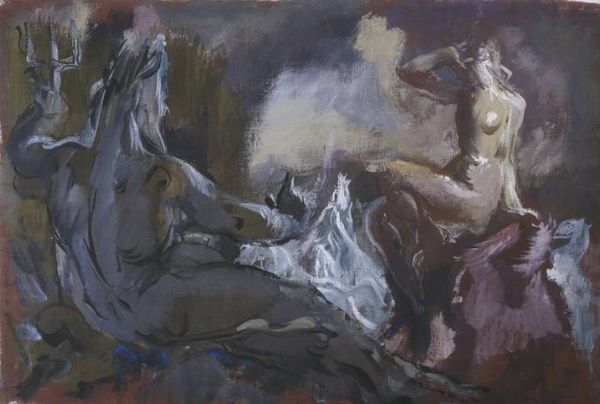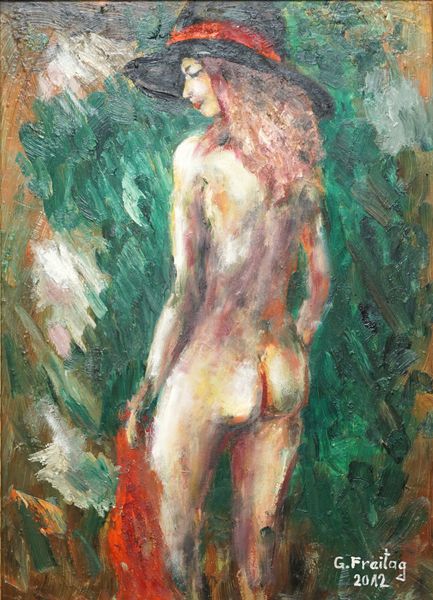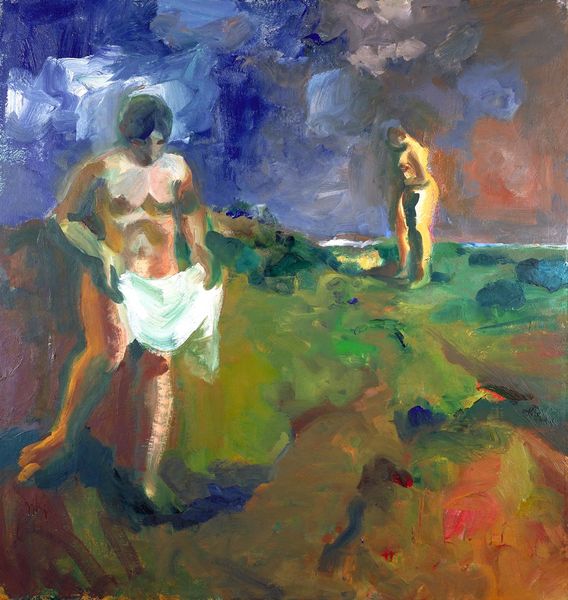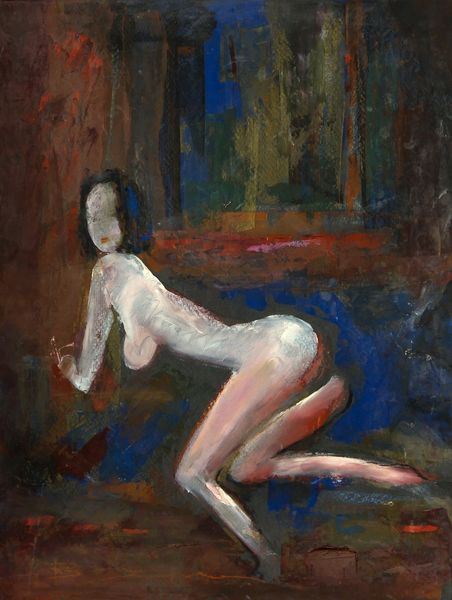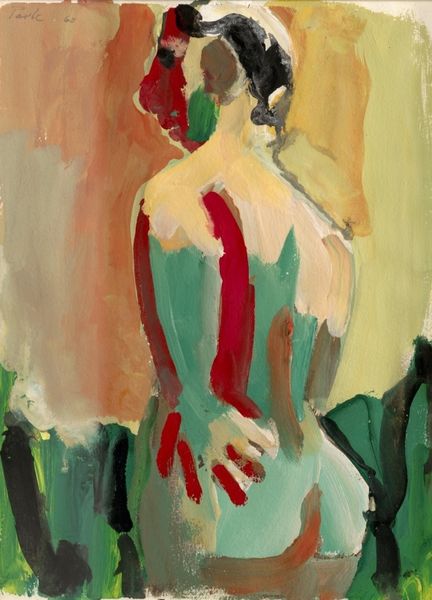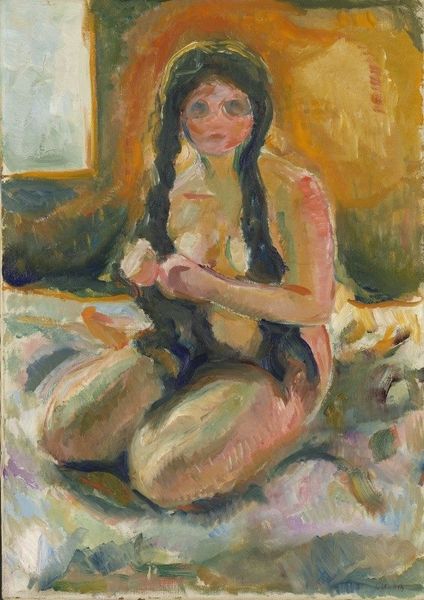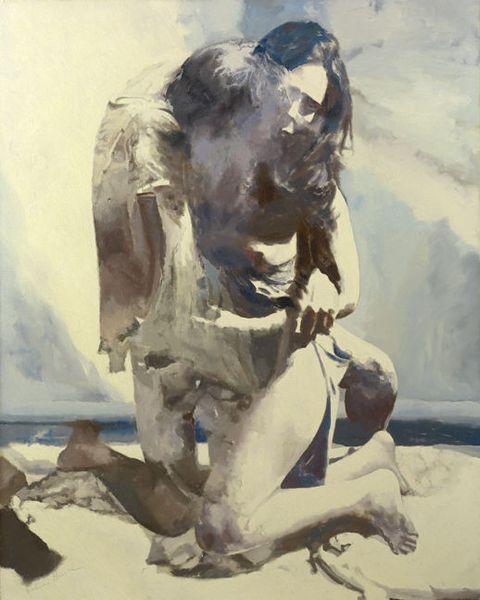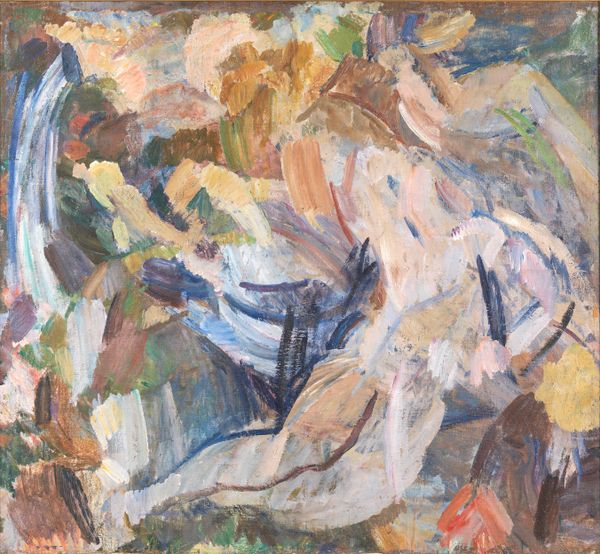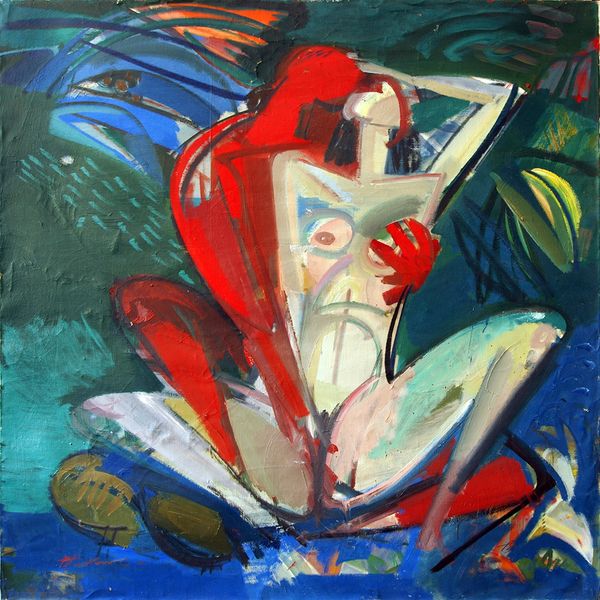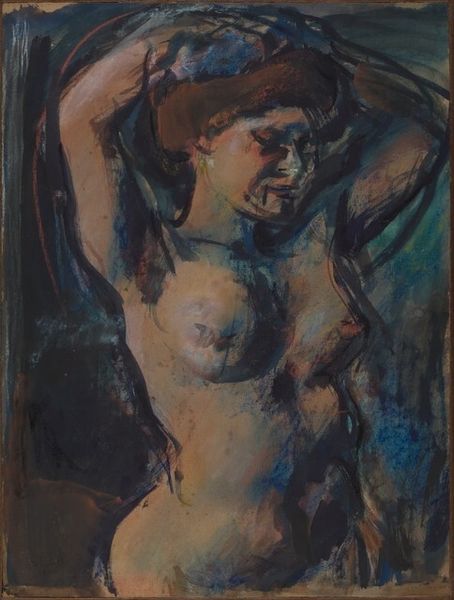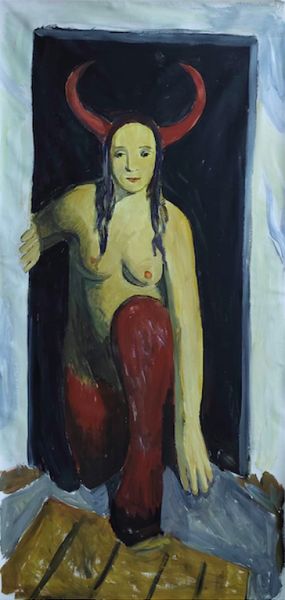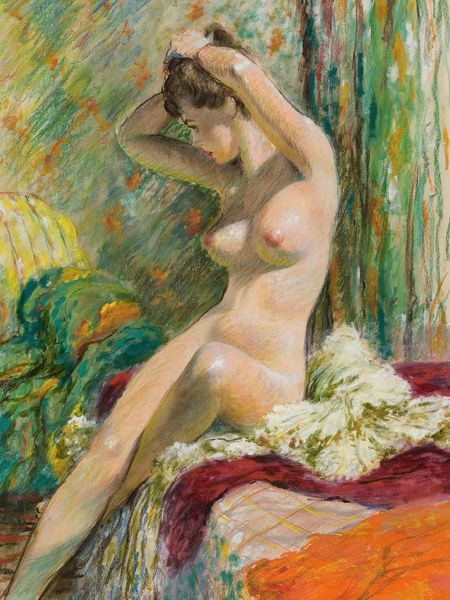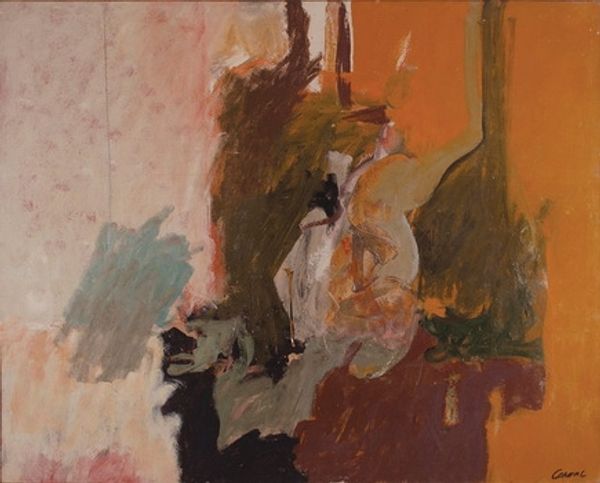
painting, acrylic-paint
#
abstract-expressionism
#
abstract expressionism
#
narrative-art
#
painting
#
landscape
#
acrylic-paint
#
figuration
#
bay-area-figurative-movement
#
acrylic on canvas
#
nude
Copyright: Elmer Bischoff,Fair Use
Editor: So, this is Elmer Bischoff’s "Europa," painted in 1957, in acrylic. There's an unsettling quality to it, don't you think? The colors are earthy, but her face is almost ghostly, riding a kind of murky bull figure. How do you interpret this work, putting aside everything we know about the Greek myth? Curator: Unsettling is the perfect word, actually. It reminds me of a half-remembered dream, where familiar elements – the nude figure, the landscape, the animal – all feel slightly out of joint. Bischoff wasn’t simply illustrating a myth, he was filtering it through a postwar sensibility. Look at the brushstrokes, so loose and almost frantic. It feels as if he is grappling with something profound, like a half-formed truth on canvas. Do you get the sense that it is less about beauty and more about an exploration of our fears? Editor: Definitely. There is a raw emotional intensity. It almost feels unfinished. Curator: Exactly! That’s the key. It is about the process, not the perfect depiction. In many ways, I can also describe this piece as a meditation on change, or an articulation about confronting that which scares us to discover hidden beauty on the other side. It is abstract, yet visceral. That bull is powerful. What story do you imagine as you reflect? Editor: I keep coming back to that face – so blank, so impassive, as if she's sleepwalking into destiny. Curator: Beautifully put! Maybe that's the universal appeal: we're all sleepwalking into something. Thank you, I've gained new insight simply chatting to you. Editor: Thanks! It’s given me a lot to think about, too. Bischoff turned the old story on its head, for sure!
Comments
No comments
Be the first to comment and join the conversation on the ultimate creative platform.
